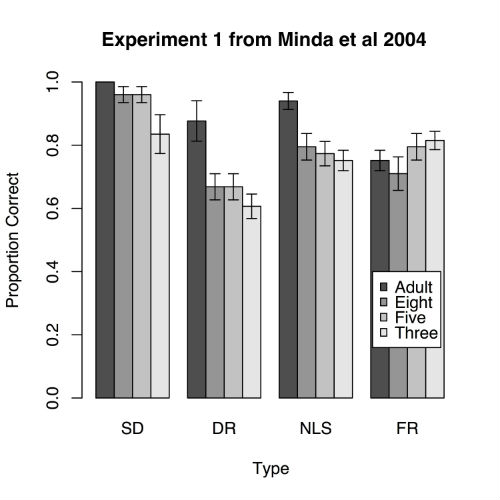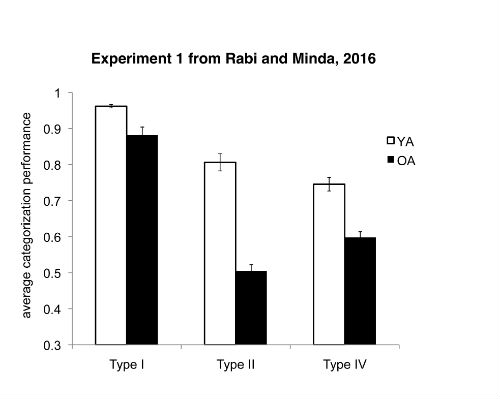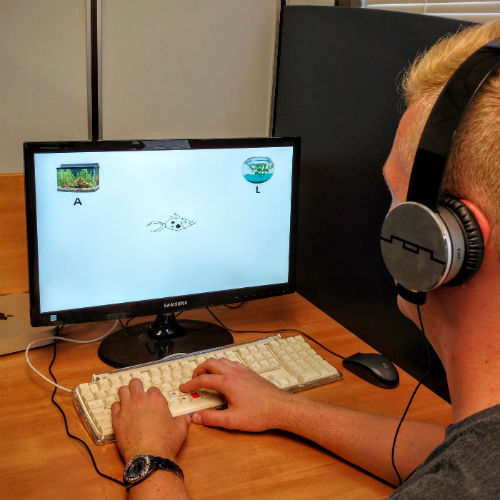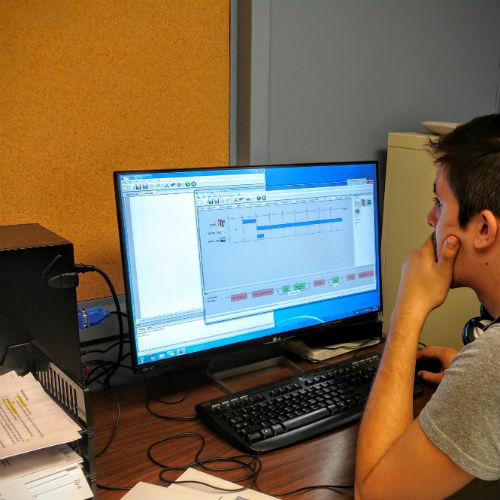Research
Campus Maps
Understanding how people learn new concepts
ABOUT DR. MINDA

John Paul Minda is an associate professor of Psychology at Western whose innovative research works to answer questions about how and why humans organize information into categories and concepts and how the resulting conceptual structure influences thinking and behaviour. This work extends into research on expert performance, complex learning, and understanding the neuro-cognitive effects of mindfulness meditation practice.
Dr. Minda’s research lab is primarily funded by NSERC and SSHRC and makes use of behavioural testing methods, ERP, and mathematical modelling. Dr. Minda has also received funding for special projects through Mitacs, to support connections between academia and business initiatives in his research.
RESEARCH OVERVIEW
Humans organize information from the world into structured representations: concepts and categories. These concepts are functional from a cognitive and behavioural standpoint because they allow the organism to behave the same way toward different examples and encounters of the same kind of thing. A major and foundational line of Dr. Minda’s research deals with how people learn new categories, how they recruit various cognitive processes when learning new categories, and how different modes of category learning can be dissociated (Minda & Miles, 2010).
For example, adults, children, older adults, and even rhesus monkeys show some surprising similarities in their ability to learn novel categories of perceptual objects (Minda, Desroches, & Church, 2004; Rabi & Minda, 2014; 2016). All four groups are able to easily learn categories that are defined by a single attribute (e.g. red things) or those that are defined by overall family resemblance (e.g. things are usually red). However, adults can also learn disjunctive categories easily by relying on a verbalizable rule; monkeys cannot. In addition, younger children are impaired relative to adults, and older adults are impaired in the same way (see figures 1 and 2 for examples). Students in Dr. Minda’s lab have been working on how to teach children and older adults and young children to overcome these subtle deficits.

Figure 1. Reproduced from Minda, Desroches, and Church, 2004, this figure shows how adults and children perform well when learning perceptual categories defined by a single-dimension rule (SD) or a family resemblance (FR) but children are impaired relative to adults when learning categories that require a disjunctive rule (DR) or a non-linear structure (NLS).

Figure 2. Reproduced from Rabi & Minda, 2016, this figure shows how younger and adults perform well when learning perceptual categories defined by a single-dimension rule (Type 1) or a family resemblance (Type IV) but older adults are impaired relative to adults when learning categories that require a disjunctive rule (Type II)
Dr. Minda’s research on category learning and conceptual behaviour has been extended to many novel applications. For example, recent work with medical students at Schulich and the cardiac rehabilitation group at St Joseph’s hospital has demonstrated that teaching people about the causal relationships between disease and symptoms can measurably improve their ability to learn about a new disease and also how to manage their own rehabilitations (Devantier, Minda, Goldszmidt, Haddara, 2009; Goldszmidt, M. Minda, Devantier, Skye, & Woods, 2011.)
Dr. Minda’s most recent SSHRC-funded research has been investigating the effects and neuro-cognitive benefits of mindfulness meditation practice and how mindfulness might be used beneficially in different settings. Mindfulness is a deliberate attention to and awareness of the present and can be cultivated through meditation practice. There are many measurable benefits, including reduced stress and also improved cognitive Figure 2. Reproduced from Rabi & Minda, 2016, this figure shows how younger and adults perform well when learning perceptual categories defined by a single-dimension rule (Type 1) or a family resemblance (Type IV) but older adults are impaired relative to adults when learning categories that require a disjunctive rule (Type II flexibility. Dr. Minda’s has partnered with several companies (Sigma Assessment and 3M Canada) to investigate mindfulness in corporate settings.
LAB RESOURCES
Dr. Minda’s primary research lab is currently located in the Social Science Centre at Western on the 7th floor. The lab houses office and work space for graduate students and postdocs, as well as several undergraduate research volunteers. The lab suite has room for behavioural testing, and also resources for computational and mathematical modelling. The 7th floor also has resources for eye-tracking studies and an ERP lab for the measurement of electrical impulses in the cortex during behavioral or perceptual tasks. Dr. Minda’s entire research lab will move into the new Western Interdisciplinary Research Building next year, and will be expanded to include state-of-the-art mindfulness meditation research lab.

Figure 3. A student participant learns to classify drawings with different attributes into two different categories.

Figure 4. One of Dr. Minda’s graduate students works on experiment design with PsychoPy, a visual presentation and data collection platform.
See Dr. Minda’s research website for more information about his research and a complete list of publications.
REFERENCES
Devantier, S. L., Minda, J. P., Goldszmidt, M. & Haddara, W. (2009). Categorizing Patients in a forced-choice triad task: The integration of context in patient management, PLoSONE 4, e5881.
Goldszmidt, M., Minda, J. P., Devantier, S. L., Skye, A. L., & Woods, N. N. (2011). Expanding the basic science debate: the role of physics knowledge in interpreting clinical findings. Advances in Health Sciences Education, 17, 547–555.
Figure 4. One of Dr. Minda’s graduate students works on experiment design with PsychoPy, a visual presentation and data collection platform.
Minda, J. P & Miles, S. J. (2010). The Influence of Verbal and Nonverbal Processing on Category Learning. In B.H. Ross (Ed.).The Psychology Of Learning and Motivation, Vol 52, pp. 117-162
Rabi R. R. & Minda J. P. (2014) Rule-Based Category Learning in Children: The Role of Age and Executive Functioning. PLoSONE 9(1): e85316.
Rabi, R., & Minda, J. P. (2016). Category learning in older adulthood: A study of the Shepard, Hovland, and Jenkins (1961) tasks. Psychology and Aging, 31, 185–197.
Smith, J. D., Minda, J. P., & Washburn, D. A. (2004). Category Learning in Rhesus Monkeys: A Study of the Shepard, Hovland, and Jenkins (1961) Tasks. Journal of Experimental Psychology: General, 133, 398–414.

